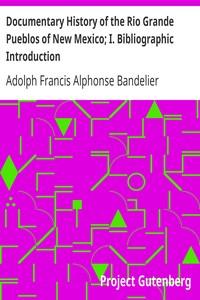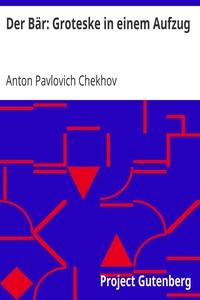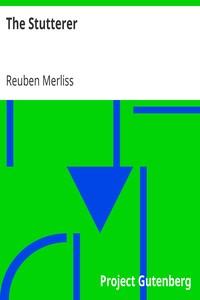Read this ebook for free! No credit card needed, absolutely nothing to pay.
Words: 9011 in 2 pages
This is an ebook sharing website. You can read the uploaded ebooks for free here. No credit cards needed, nothing to pay. If you want to own a digital copy of the ebook, or want to read offline with your favorite ebook-reader, then you can choose to buy and download the ebook.


: Documentary History of the Rio Grande Pueblos of New Mexico; I. Bibliographic Introduction Papers of the School of American Archaeology No. 13 by Bandelier Adolph Francis Alphonse - Pueblo Indians; Indians of North America New Mexico
es where his interpreters understood the language of the people they were among. These scribes faithfully recorded the names of pueblos as they heard them, and sometimes several names, each in a different language for the same village, hence the number of pueblos recorded is considerably larger than it actually was. Again the inevitable misunderstanding of Indian pronunciation by the Spaniards caused them to write the same word in different forms according as the sounds were uttered and caught by the ear. An accurate copy of these documents of O?ate's time made by one versed in Pueblo nomenclature and somewhat acquainted with Pueblo languages would be highly desirable. O?ate is not given to fulness in ethnological details. His journal is a dry record of what happened during his march and occupancy of the country. Customs are only incidentally and briefly alluded to.
The minor documents connected with O?ate's enterprise and subsequent administration of the New Mexican colony, so far as known, are of comparatively small importance to the history of the Rio Grande Pueblos. During the first years of the seventeenth century the attention of O?ate was directed chiefly toward explorations in western Arizona and the Gulf of California. While he was absent on his memorable journey, quarrels arose in New Mexico between the temporal and ecclesiastical authorities, which disturbed the colony for many years and form the main theme of the documentary material still accessible. Even the manuscripts relating to these troubles contain, here and there, references to the ethnological condition of the Pueblos. Charges and counter-charges of abuses committed by church and state could not fail to involve, incidentally, the points touching upon the Indians, and the documentary material of that period, still in manuscript but accessible through the copies made by me and now in the Peabody Museum of Harvard University, should not be neglected by serious investigators. To enter into details regarding the tenor of these documents would be beyond the scope of this Introduction, but I would call attention in a general way to the value and importance of church records, which consist chiefly of registers of baptisms, marriages, and deaths. These for the greater part were kept with considerable scrupulosity, although there are periods during which the same degree of care was not exercised. They are valuable ethnologically by reason of the data which they afford with respect to intermarriages between members of distant tribes, through the numerous Indian personal names that they contain, and on account of the many records of events which the priests deemed it desirable to preserve. Examples will be given in the text of the Documentary History to follow.
The destruction of the archives and of writings of all kinds in New Mexico during the Indian revolt of 1680 and in succeeding years has left the documentary history of the province during the seventeenth century almost a blank. Publications are very few in number. There is no doubt that the archives of Spain and even those of Mexico will yet reveal a number of sources as yet unknown; but in the meantime, until these treasures are brought to light, we must remain more or less in the dark as to the conditions and the details of events prior to 1692. A number of letters emanating from Franciscan sources have been published lately in Mexico by Luis Garcia y Pimentel, and these throw sidelights on New Mexico as it was in the seventeenth century that are not without value. In the manuscripts from the archives at Santa F? that survived the Pueblo revolt, now chiefly in the Library of Congress at Washington, occasional references to events anterior to the uprising may be found; and the church books of El Paso del Norte contain some few data that should not be neglected.
After the recall of O?ate from New Mexico, not only the colony but also the missions in that distant land began to decline, owing to the bitter contentions between the political and the ecclesiastical authorities. The Franciscan Order, desirous of inspiring an interest in New Mexican missions, fostered the literary efforts of its missionaries in order to promote a propaganda for conversions. It also sent a special visitor to New Mexico in the person of Fray Estevan de Perea, who gave expression to what he saw and ascertained, in two brief printed but excessively rare documents, a facsimile copy of which is owned by my friend Mr F. W. Hodge, of the Bureau of American Ethnology. A third letter which I have not been able to see is mentioned by Ternaux-Compans, also a "Relacion de la Conversion de los Jumanos" by the same and dated 1640.
The second group of manuscripts, in the national archives in the City of Mexico, is more complete than the first. It contains information on the beginnings of the rebellion and on later events that are of great importance.
The third group, and by far the most complete, is in Spain, but in regard to it I am unable to give any precise information, since every opportunity of completing my investigations concerning the Southwest by studying the Spanish archives, notwithstanding repeated promises, has been withheld.
A great amount of documentary manuscript material, mostly of a local character, is contained in the church books of the eighteenth century formerly at the pueblo of Santa Clara and now preserved at Santa F? through the efforts of the late Archbishop J. B. Salpointe. There are also the "Informaciones Matrimoniales," which contain data of great importance. Through them we are informed of the tragic fate of the last expedition of the Spaniards to the northwest, with its horrifying incidents. The story of woe and disaster that pictures the life of the Indian Pueblos and Spanish settlers during the eighteenth century is contained in fragments in the plain, matter-of-fact church registers, and it requires painstaking investigation to collect it. The greatest part of this information concerns the Rio Grande Pueblos. A careful investigation of the matrimonial and baptismal registers will yield data concerning the clans and indications of the primitive rules of marriage, while the "Libros de Fabrica" contain interesting data on the churches of the Rio Grande valley. Great labor and the utmost scrutiny are required in sifting these time-worn papers for desirable data, and especially is a considerable knowledge of conditions and events necessary; but the result of thorough investigation, especially through literal copying by the student, will amply repay the time and labor bestowed.
What I have stated in regard to the church archives applies, in a still greater degree, to the state and private papers that may be accessible. Of the former the archives of Santa F? contain a great number, though many of them are only fragmentary. Valuable documents exist also in the archives of the Surveyor General at Santa F?; these are valuable chiefly for historical data covering the first half of the eighteenth century. The national archives in the City of Mexico are much more complete than those of New Mexico, while in Spain we may expect to find an almost complete set of government documents, preserved with much greater care and with more system than in any early Spanish possessions in America. The city of Sevilla would be the first place in which research in this direction should be conducted.
It is of course understood that I omit from the above account a number of publications containing more or less brief and casual references to New Mexico. Most of them are geographical, and but few allude to historical facts. In the notes to the Documentary History proper I may refer to some of them.
Perhaps the last book published on New Mexico in the Spanish language is the little book of Pino, which, however, has little more than a bibliographic value except in so far as it touches the condition of New Mexico at the beginning of the nineteenth century. The documents in the New Mexican and Mexican archives up to the date of the American occupancy present features similar to those that characterize the Spanish documents of the eighteenth century. It would be too tedious to refer to them in detail, and I therefore dismiss them for the present with this brief mention. If I do not mention here the literature on New Mexico in the English language it is not due to carelessness or to ignorance of it, but because of its much greater wealth in number and contents, its more ready accessibility, and because in matters respecting the history of early times the authors of these works have all been obliged to glean their information from at least some of the sources that I have above enumerated and discussed.
I must state that in this Introduction I have abbreviated as much as practicable the titles of books and manuscripts. These are often very long, and it is unnecessary to burden the present text with them, as I shall have to give the full titles in the notes to the Documentary History proper.
It may not be out of place to add to the above a brief review of the distribution and location of the various Pueblo groups at the beginning of the sixteenth century, but strictly according to documentary information alone. The location of different villages must be reserved for later treatment, hence as the ranges of the various linguistic groups had no definite boundaries, only the relative position and approximate extent can be given here.
Free books android app tbrJar TBR JAR Read Free books online gutenberg
More posts by @FreeBooks

: Der Bär: Groteske in einem Aufzug by Chekhov Anton Pavlovich Flachs Fokschaneanu Luise Translator - Russia Social life and customs Drama DE Drama


: Ein Heiratsantrag: Scherz in einem Aufzug by Chekhov Anton Pavlovich Flachs Fokschaneanu Luise Translator - Russia Social life and customs Drama DE Drama





